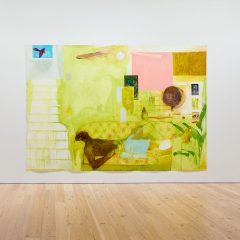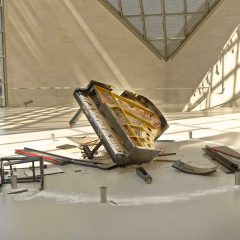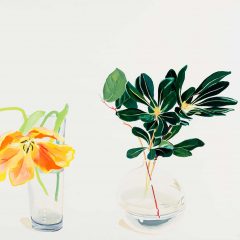It is difficult to commute on the Tube everyday without seeing some mention of the upcoming 2012 Olympics. In light of this increased global attention and the spirit of the world’s nations coming together, I’d like to consider this year’s museum offerings and the subsequent pressure to represent England’s national identity. Of all the shows happening this year, Damien Hirst at the Tate Modern and David Hockney at The Royal Academy come to the forefront. Now, I don’t pretend to be an expert on the very British of the British (especially as a Canadian living in London), but intend, instead, to reflect on these artists and what their shows signify in this very meaningful year for London.
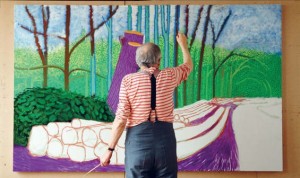
Hockney is first out of the gate with the launch of A Bigger Picture this past weekend [and some rather feisty jabs at Hirst’s integrity as an artist because of his use of assistants]. The current show features the artist’s depictions of the landscape of his native Yorkshire, many specifically made for the Royal Academy’s grand spaces. Hockney links himself with England proper in responding specifically to its geography. Is this allegiance to the countryside meant to invoke a modern reference to British landscape painting? The artist also revives his original Polaroid/proto-cubist joiners project by mounting paintings in multiple parts and creating multi-faceted videos. The artist, thus, in a way reminds us of his earliest projects, transposing his artistic vision throughout his oeuvre. For me, however, Hockney’s strength lies in the paintings of his American period and his role within the Pop Art movement. I can’t help but feel that the current show falls short of representing England here and now. Hockney just seems to be one of those long-lingering stalwarts of British art, whose golden age has passed.
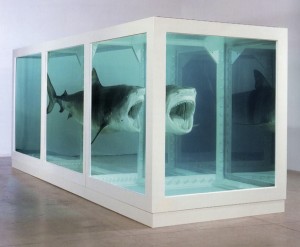
While the Hockney show has been forcibly underlined to not be a retrospective, the Tate Modern’s upcoming show of Damien Hirst announces itself to be just that. It is tough to include Hirst in the cannon of British sculptors such as Henry Moore, Barbara Hepworth and Lynn Chadwick. Yet, he has – for better or for worst – been a defining force of British (and international) art of the 1990s and 2000s. Just as his complete set of spot paintings currently on display in every single Gagosian Gallery worldwide is polarizing opinions, the most prominent of the Young British Artists (YBAs) has always been a sensationalist playing with the art market. In his art, he has articulated and preserved an era of the art world much like – forgive the analogy – a shark suspended in formaldehyde.
His 2007 skull encrusted with diamonds called For the Love of God was created at the height of the art market bubble and remains the most expensive work of art ever created. Controversy aside, Hirst’s work does draw from a British tradition, prominently influenced by the great Francis Bacon. For his part, Tate Director Nick Serota understood the importance of billing a prominent contemporary British artist in 2012, to capture the world’s attention. I have no doubt that the Hirst show will be a podium-worthy exhibition, an Olympic event in its own right.
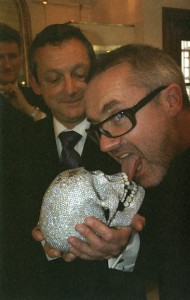
The truth, I think, is simple: big names capture attention. And it is difficult to encapsulate national identity with just one artist – controversy and discussion will always tag along. Even group exhibits will inflame discussion as to omissions (the Royal Academy’s uneven Modern British Sculptors show of last year is a prime example). Museums elsewhere in London have chosen different strategies for the big year: The Hayward Gallery will install contemporary artist Jeremy Deller’s first retrospective while The National Portrait Gallery will mount the unnervingly well-timed exhibit of portraits by the late Lucian Freud. The National Gallery will stage a Turner show earlier in the year but will focus on Titian during the Games, and the V&A will go the group-route, surveying British Design from 1948 to 2012. Freud is probably the best choice for 2012, honouring a fallen hero and a great of British art.
The duality of collective national identity and individuality is especially appropriate in an Olympic year, when solo athletes distinguish themselves from a group representing their country. However, the very foundation of contemporary art today, in my opinion, transcends national barriers. Which begets the question: Am I only scrutinizing the offerings of the art world in 2012 and testing their British-ness because of the abundance of Olympic news floating around?


